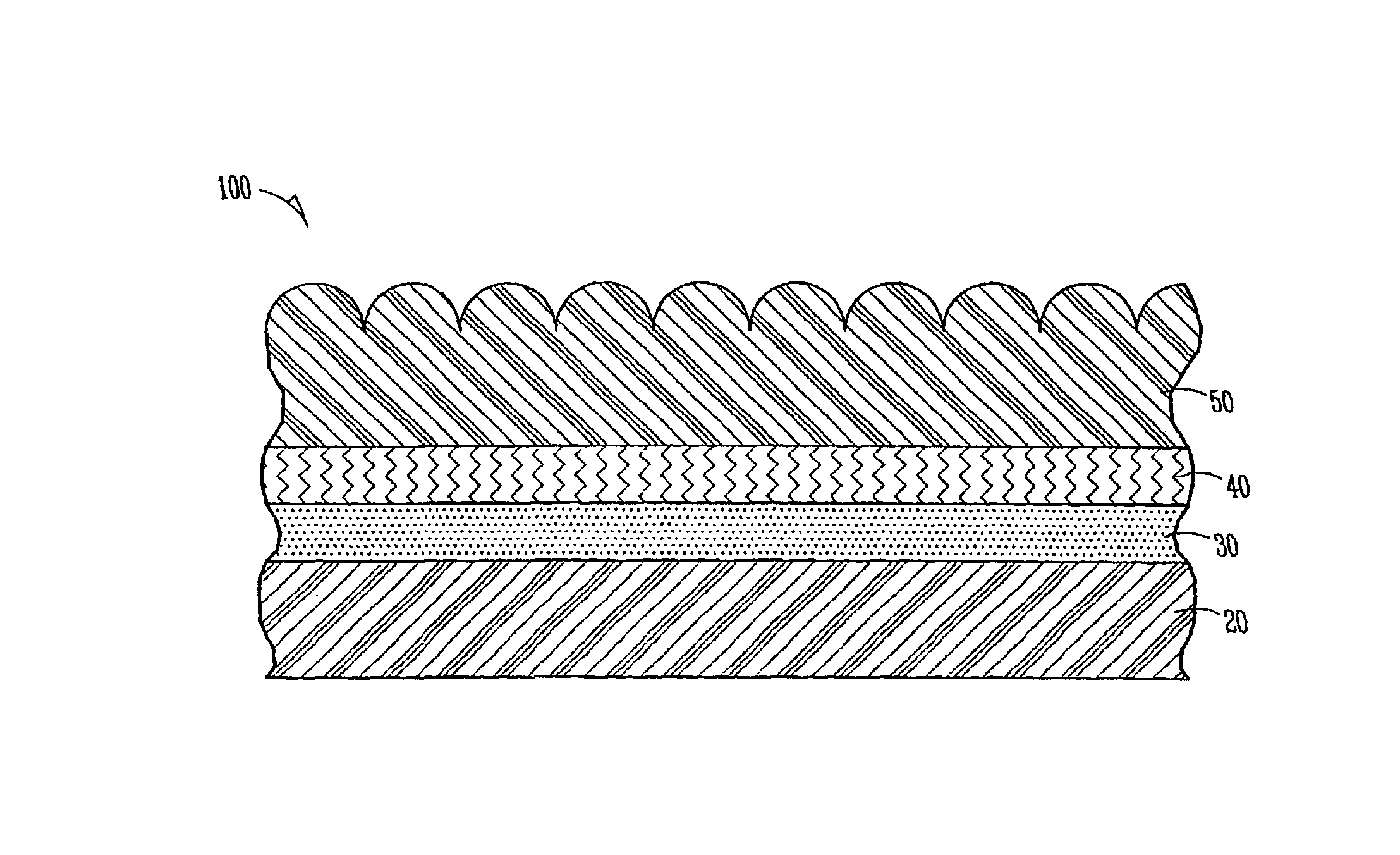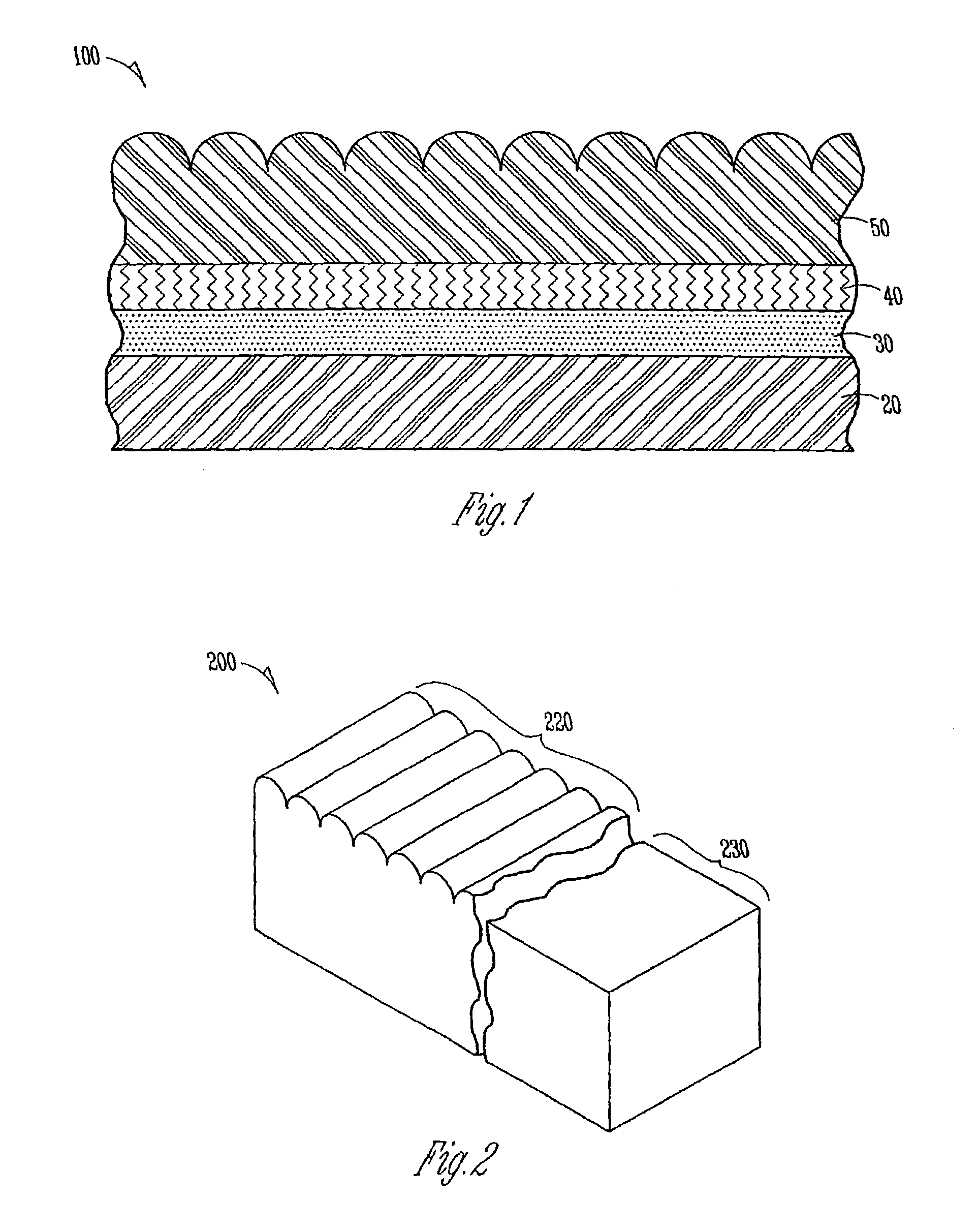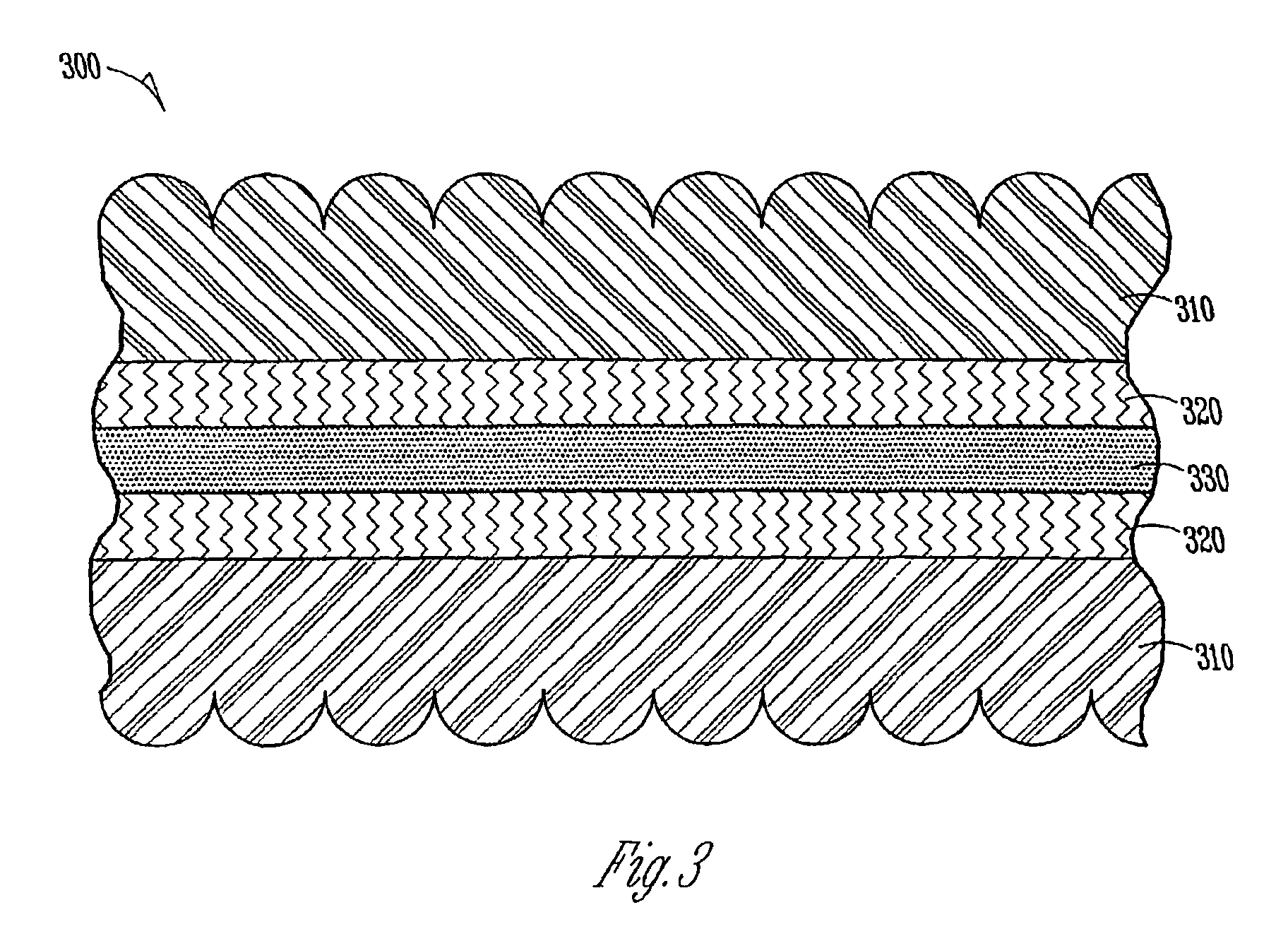Lenticular card and processes for making
a technology of lenticular card and lens, applied in the field of lenticular card, can solve the problems of difficult, complicated, and difficult to obtain a destructive bond between the lens and the substrate, and achieve the effect of improving properties and improving indestructibility
- Summary
- Abstract
- Description
- Claims
- Application Information
AI Technical Summary
Benefits of technology
Problems solved by technology
Method used
Image
Examples
example i
Lenticulated Card No. 1.
Materials and Layer Specifications
[0077]Transparent Sheet: 18 mils 75 LPI APET Clear Lens[0078]Image Inks: 4-Color Process UV litho-inks; 1 Hit Opaque White UV litho-ink[0079]Core Sheet: 10 mils white opaque polystyrene[0080]Adhesive: solvent based moisture urethane adhesive[0081]Backing Sheet: 2 mils clear PVC laminating film
[0082]The core sheet and the backing sheet were fused together in a compression laminator, for example, with a platen with thermal heating on the 2 mils clear PVC laminating film. The adhesive failed when PVC was used as the backing sheet, that is, the moisture cure urethane used in this experiment did not satisfactorily bond to the PVC.
Process 1
[0083]A transparent sheet of 18 mils clear 75 LPI APET (polyester) lenticular lens was printed with an interlaced animated image matching the frequency of the 75 LPI pitch lenticular lens. The lens used could be made thicker or thinner and made from polymer materials other than APET polyester, in...
example ii
Lenticulated Card No. 2.
Materials and Layer Specifications
[0085]Transparent Sheet: 18 mils 75 LPI APET Clear Lens[0086]Image Inks: 4-Color Process UV litho-inks; 1 Hit Opaque White UV litho-ink; Black Ink-UV Cured[0087]Adhesive: UV Curable Radcure 10PSA-B (a 2-part pressure sensitive adhesive that cures to a solid over time)[0088]Core Sheet: 10 mils white opaque polystyrene core[0089]Adhesive: UV Curable Radcure 10PSA-B[0090]Backing Sheet: 2 mils clear PVC laminating film
Note: this adhesive system failed to provide a destructive bond when PVC was used as the backing sheet.
Process 2
[0091]The process of Example I was repeated with the exception that a UV curable pressure sensitive adhesive (PSA), Radcure 10 PSA-B, a two-part adhesive, was mixed according to manufacturer recommendations and was screen printed on the printed lenticular sheet, using a 137 Mesh screen. UV light irradiation was used on a 30 inch wide web running at 60 feet per minute and using two 300 Watts per inch medium...
example iii
Lenticulated Card No. 3.
Materials and Layer Specifications
[0092]Transparent Sheet: 18 mils 75 LPI APET Clear Lens (Alternatively, a PVC lens was used and did not have curl as was the situation with an APET and PVC backing combinations)[0093]Image Inks: 4-Color Process UV litho-inks; 1 Hit Opaque White UV litho-ink; Black Ink-UV Cured[0094]Adhesive: UV activated acrylate urethane adhesive(for example Dymax 3-3094, a polyurethane oligomer mixture commercially available from Dymax Corp., Torrington, Conn.)[0095]Core Sheet: 8 mils White PVC Core[0096]Adhesive: UV activated acrylate urethane (Dymax 3-3094)[0097]Backing Sheet: 2 mils clear PVC laminating film (applied to both sides of an 8 mils white PVC core)
[0098]This adhesive worked well and provided a desired destructive bond when PVC was used as the backing sheet which sheet could be either laminated or non-laminated.
Process 3
[0099]The process of Example II was repeated with the exception that an alternative UV curable acrylate-ureth...
PUM
| Property | Measurement | Unit |
|---|---|---|
| Fraction | aaaaa | aaaaa |
| Fraction | aaaaa | aaaaa |
| Time | aaaaa | aaaaa |
Abstract
Description
Claims
Application Information
 Login to View More
Login to View More - R&D
- Intellectual Property
- Life Sciences
- Materials
- Tech Scout
- Unparalleled Data Quality
- Higher Quality Content
- 60% Fewer Hallucinations
Browse by: Latest US Patents, China's latest patents, Technical Efficacy Thesaurus, Application Domain, Technology Topic, Popular Technical Reports.
© 2025 PatSnap. All rights reserved.Legal|Privacy policy|Modern Slavery Act Transparency Statement|Sitemap|About US| Contact US: help@patsnap.com



